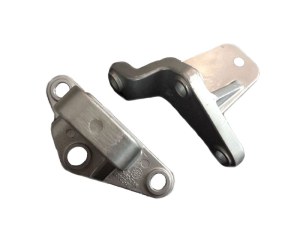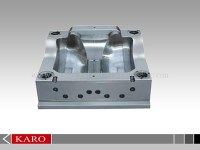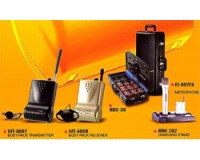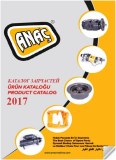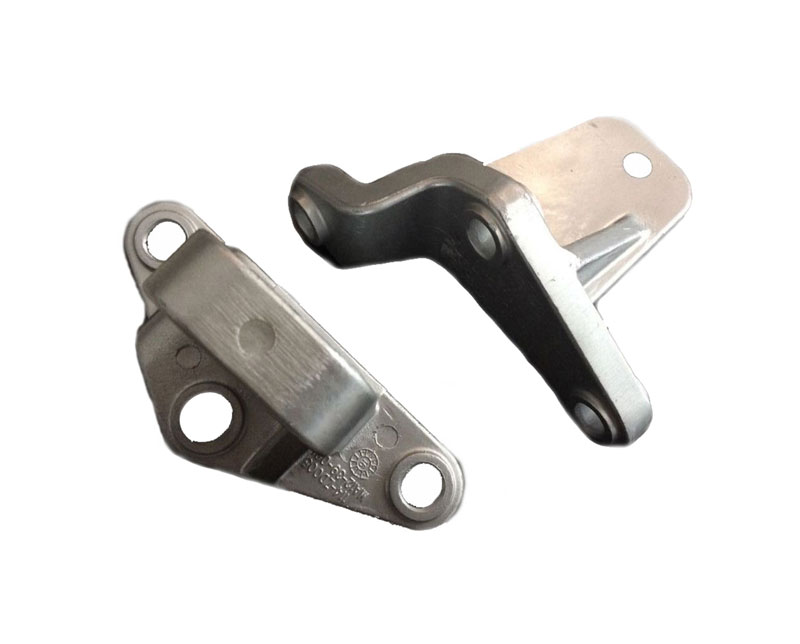Machinery engine parts are the basic components of machinery, which are the indivisible parts of machinery and machine. As a key part of the machinery, the quality of mechanical parts plays a very important role in the normal operation of machinery, so it is very important to choose high-quality mechanical parts. EMP Tech is a professional machinery parts supplier, offering high-quality machinery engine parts and attractive prices at the same time.
Machinery Engine Parts Types
Custom Bracket ADC12 Aluminum Die
Commonly used custom brackets are automobile generator brackets, engine brackets, and seat brackets.
Die Casting Part
Aluminum die castings can be used in wiper systems, engine systems, filter systems, air conditioning systems, precision compressor parts, shock absorption systems, braking systems, ABS systems, rearvi...
Die Base
Aluminium die casting die is a tool for casting metal parts, a tool that completes the die-casting process on a dedicated die-casting die forging machine. Can be customized by drawings.
Aluminum Mouting Bracket
The mounting bracket is made of aluminum alloy, which can not only be integrated, but also stable and safe.
Seat Spare Part
Common aluminum die-cast seat accessories include seat windshields and seat stops.
Machinery Engine Parts FAQs
QHow do I identify machinery engine parts?
A
Part is the most basic unit, component is composed of parts, if it can move, it is a mechanism. Generally speaking, parts make up components, components make up mechanism, and mechanism makes up machine. Components can also be parts, such as large box parts, also known as components. Generally, weldments shall be treated as components.
QWhat is engine and its types?
A
An engine is a machine that converts fuel into mechanical energy to power a vehicle, generator, or other equipment. It is typically made up of various components, including cylinders, pistons, crankshafts, and valves, among others. Engines are used in a wide range of applications, from small handheld tools to large industrial equipment. There are several types of engines, including: Internal combustion engines, External combustion engines, and Electric motors.
QWhat is the most important part of an engine?
A
The most important part of an engine depends on the type of engine and its intended use. However, generally speaking, the most crucial part of an engine is the combustion chamber, where fuel and air are mixed and burned to produce energy.
In a gasoline engine, the combustion chamber is typically the cylinder where the fuel-air mixture is ignited by a spark plug. In a diesel engine, the combustion chamber is usually a pre-chamber where fuel is injected and ignited by the heat of compressed air.
Without a properly functioning combustion chamber, the engine would not be able to generate power and propel a vehicle or machinery. Other important parts of an engine include the pistons, crankshaft, valves, and camshaft, which all work together to convert the energy produced in the combustion chamber into useful mechanical work.
QWhat machines are used in agriculture?
A
There are a wide variety of machines used in agriculture, ranging from simple hand tools to highly advanced technology. Here are some common types of machines used in agriculture:
Tractors: Tractors are used for a wide range of tasks, from plowing fields to hauling heavy loads.
Harvesters: Harvesters are machines used to gather crops, such as grain or fruits, from the fields.
Planters: Planters are machines used to sow seeds in the ground in a uniform and precise manner.
Irrigation systems: Irrigation systems are used to provide water to crops in areas with low rainfall or in dry seasons.
Sprayers: Sprayers are used to apply fertilizers, pesticides, and herbicides to crops to help protect them from pests and diseases.
Tillers: Tillers are used to prepare soil for planting by breaking up and aerating the soil.
Balers: Balers are used to compress hay, straw, or other materials into tightly packed bales for storage or transport.
Seed drills: Seed drills are used to plant seeds in rows, which helps to ensure even growth and easier weed control.
Cultivators: Cultivators are used to break up soil and remove weeds between rows of crops.
Livestock equipment: Livestock equipment, such as milking machines, feeders, and waterers, are used to help manage and care for farm animals.
QWhat are the advantages of mechanization in agriculture?
A
There are several advantages of mechanization in agriculture, including:
Increased efficiency and productivity: Mechanization allows farmers to complete tasks much faster and more efficiently than they would be able to by hand. This can result in higher yields and greater profits.
Improved quality: Using machines to plant, harvest, and process crops can result in higher quality produce, as machines can be more precise and accurate than humans.
Reduced labor costs: Mechanization reduces the need for manual labor, which can be expensive and difficult to find in some areas. This can lead to significant cost savings for farmers.
Increased safety: Farming can be a dangerous occupation, with many hazards and risks associated with manual labor. Mechanization can reduce the risk of injury and accidents, making farming a safer profession.
Ability to farm on a larger scale: Mechanization allows farmers to farm on a larger scale than they would be able to with manual labor alone. This can result in higher profits and greater food production to meet the demands of a growing population.
QWhat are the basic machinery engine parts of an engine?
A
Cylinder Block: It is the main body of the engine that houses the cylinders, pistons, and other components.
Pistons: These are cylindrical components that move up and down inside the cylinder block and are connected to the crankshaft via connecting rods.
Connecting rods: These are the components that connect the pistons to the crankshaft and help transfer the linear motion of the pistons into rotational motion of the crankshaft.
Crankshaft: This is the main rotating shaft in the engine that converts the linear motion of the pistons into rotational motion.
Camshaft: This is another rotating shaft that controls the opening and closing of the engine's valves.
Valves: These are components that control the flow of fuel and air into the engine and the exhaust gases out of the engine.
Timing Belt/Chain: This is the component that connects the crankshaft to the camshaft and ensures that the valves open and close at the right time.
Cylinder Head: This is the component that sits on top of the cylinder block and contains the valves and the combustion chamber.
Spark Plug: This is the component that ignites the fuel-air mixture in the engine's combustion chamber.
Fuel Injector: This is the component that sprays fuel into the engine's combustion chamber.
There are many die casting parts manufacturers, but we are one of the best choices for you.
Localisation : NO.38 Duanzhou San Road,Zhaoqing(526060),Guangdong,China, 526060 Zhaoqing,
Personne à contacter : Lia Gan, 0758 2203787

